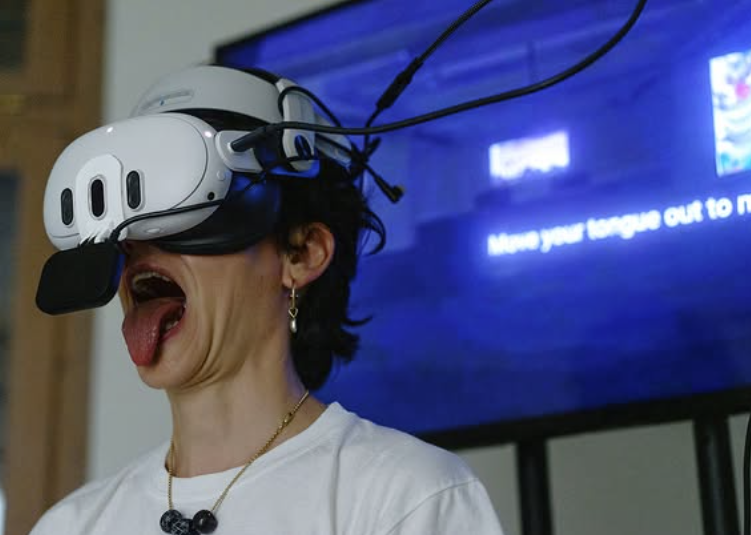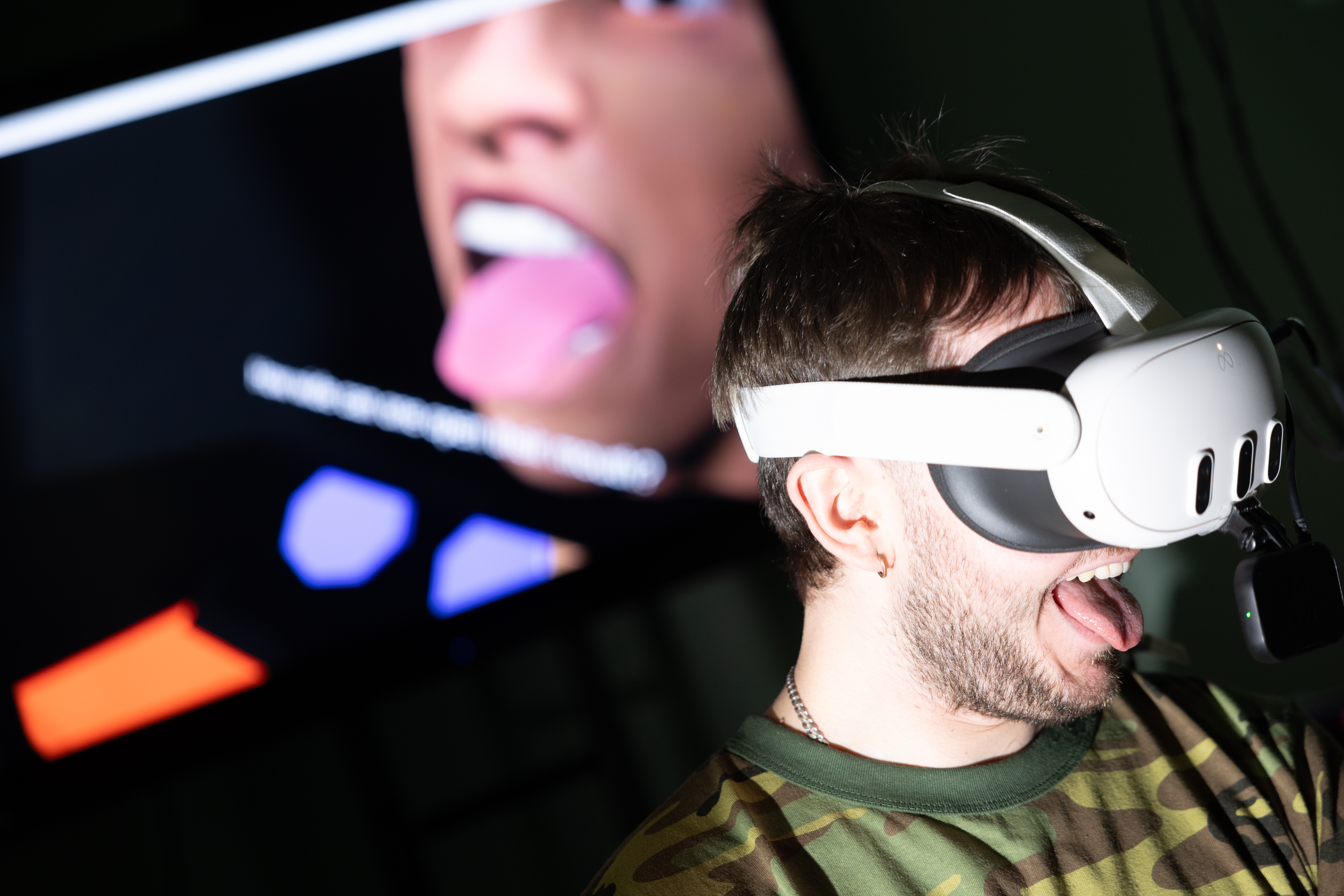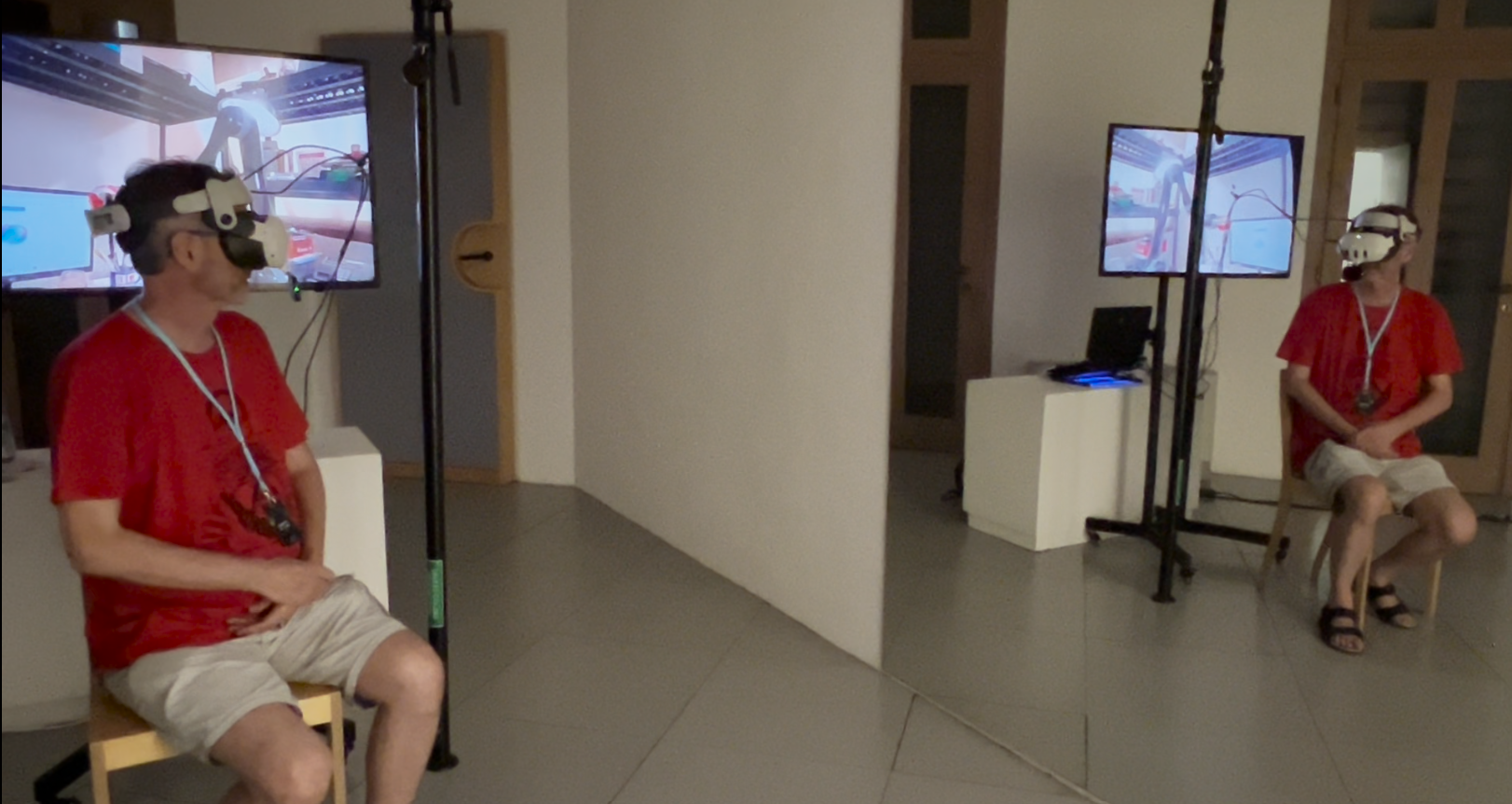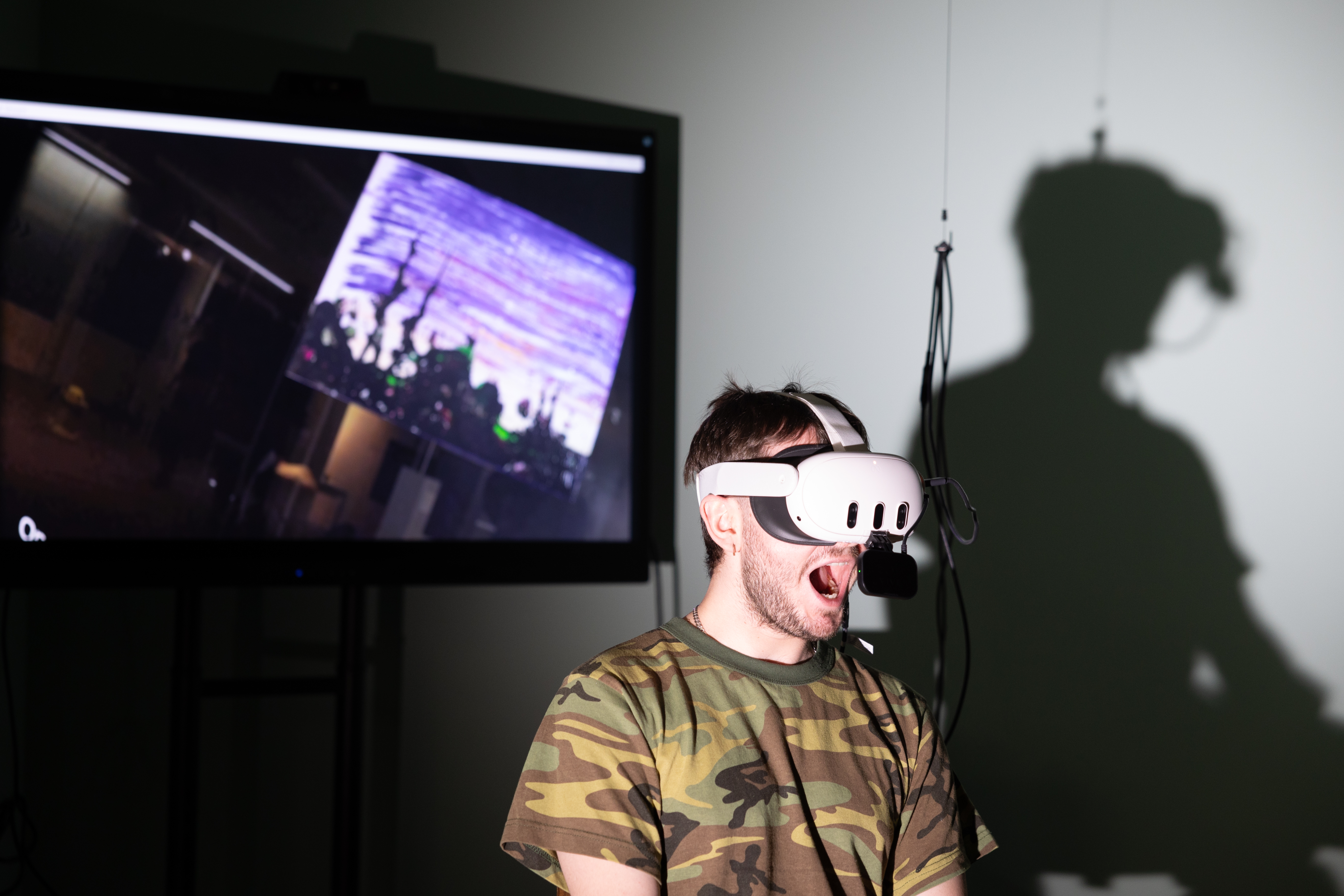Crip Sensorama: Eric's Paintings
This is the first version of Crip Sensorama, titled Crip Sensorama: Eric’s Paintings was developed with immense support of my friend and collaborator Eric Desrosiers. Initiated during the FOUNDING LAB Fall term in between Sep, 2023 - Jan, 2024, is a 10-12 minutes interactive XR art work, exihibited at xCoAx conference, in Treviso, Italy in July 2024.

Eric and his paintings
Eric is a painter in his mid 50’s who has muscular dystrophy, a degenerative neuromuscular disease. He does not have a formal education in art but has self-learnt painting with watercolor, oil, and acrylic. As he mentions in his CV, “with my physical and pulmonary limitations I discovered a talent for music and song” but “in the winter when the weather does not allow me to perform, I like to turn to painting”. However, not able to paint using his hands, he hacks and tinkers with his home environment to find plausible technical solutions to paint. For instance, Eric uses a mouth-controlled joystick called Jouse3 to operate a robotic arm by company named Kinova, precisely controlling robotic arm’s movements through pushing, rotating, blowing, and sucking on the joystick with his mouth.

Furthermore, attaching a spherical rubber ball to the finger-like-jaws of the arm which further holds and manipulate his paintbrush, Eric along with his caretakers has carefully configured this customized setup to continue his passion to paint. By moving his chin, jaw, and lips, he thus moves the robotic arm to dip the brush into paint and apply strokes to the canvas. Through this intricate combination of mouth-controlled gestures and creativehacks, Eric has developed a unique dexterity in mouth movements to express his artistic creativity.
These are four of Eric's favourite painted paintings.

Experience
Eric’s disability does not allow him to travel outside his hometown Montreal, Canada. Eric thus wanted to expand the visibility of his mouth-painted paintings to a broader audience. As a part of the Mixed Reality experience, the audience find themselves encountering Eric in different modailities and spaces. Intially they are introduced to a set of mouth gestures which they are asked to enact while a avatar mirrors them.

Language is used a strategy to invite the audience “in the experience” before they meet Eric in a 360 degree immersive video in his home environment. However, this meeting is passive as Eric does not respond but continues to paint in his bed room. What starts with a voyeristic gaze at Eric’s disability soon disrupts as the audience have to continously move their heads back and forth to make sense of their position in physical space and the 360-degree video - ultimately guiding them to Eric’s mouth movements while he paints. Making them question and understand how the Eric’s painting set up actually works.

Finally the audience enter a virtual art gallery where digitalized versions of Eric’s paintings (his five favourite ones) are placed in virtual rooms. In order to view his paintings, the audience (one at a time) however cannot walk in this gallery using their feet but but have to puff their cheeks, move their tongue out, open their mouth wide to navigate and find their way in an isolated art gallery. Accompanying them, is guidance by Eric as his voice fills the space of the gallery, making the audience feel comfortable in their very act of using their mouth in XR - an unexpected interaction modality in XR. The act of using one’s mouth to navigate in VR space thus questions the audience to re-think about the bucca (the mouth) and pay attention to their mouth movements which are often overlooked in our/their everyday lives but are crucial for Eric in his artistic practices.
